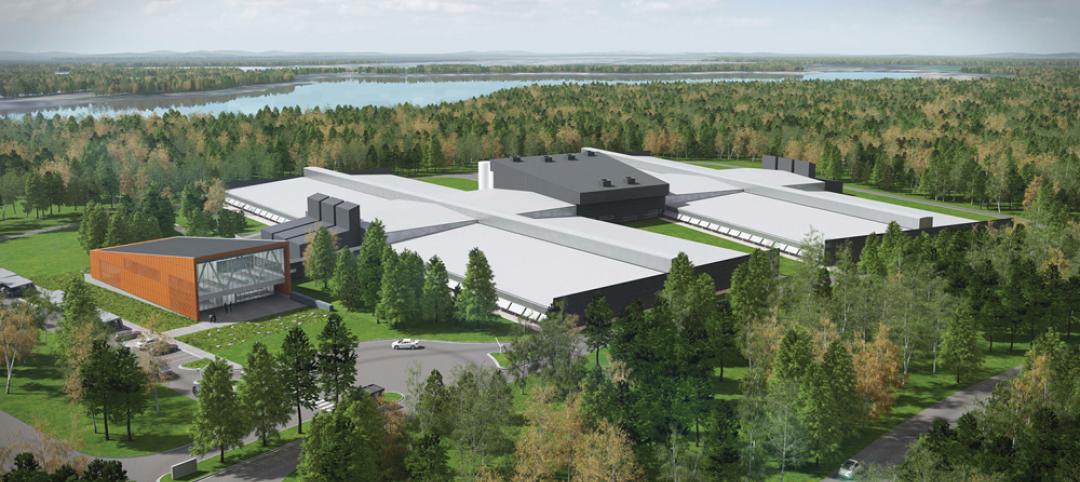Smart building technology is producing energy savings of 8% to 18% in the commercial building sector, according to a new report by the American Council for an Energy Efficient Economy.
While large showcase buildings have been the first to deploy smart building technologies, the potential for savings is great among other subsectors including Class B offices, small chain and independent retail stores, middle-tier franchise hotels, and regional nonteaching hospitals, the report says. Here’s how ACEEE assesses savings potential in these sectors:
· Offices (18% average savings) Occupancy sensors, smart thermostats, and HVAC and lighting controls can help reduce energy usage in unoccupied offices, conference rooms, and other spaces. Smart systems have been shown to improve worker productivity and even increase property value, ACEEE says.
· Retail stores (14% average savings) Smart energy management systems, thermostats, and lights can help reduce energy consumption and create a more comfortable and attractive environment for customers. Some occupancy sensors, like indoor positioning systems, can also provide a retailer with valuable data on customer behavior in the store.
· Hotels (8% average savings) Guest management systems and mobile check-in can work hand in hand with energy-saving smart technologies that control guest room HVAC systems and window shading. Smart controls can also help reduce energy from lighting and HVAC in conference areas and pumps in pool and spa areas.
· Hospitals (14% average savings) Smart technologies can help address the long operating hours and high equipment loads in hospitals. For instance, smart lighting systems can reduce energy use and increase patient comfort by better matching light output to occupancy and user needs. Without wasting energy, smart sensors and ventilation controls can maintain the ventilation needed to prevent the spread of diseases.
Related Stories
| Aug 6, 2014
$300 million mixed-use project in Chicago’s medical district wins key approval
The Illinois Medical District Commission approved a 1.16 million-sf, $300 million mixed-use project in Chicago’s Illinois Medical District.
| Aug 4, 2014
Facebook’s prefab data center concept aims to slash construction time in half
Less than a year after opening its ultra-green, hydropowered data center facility in Luleå, Sweden, Facebook is back at it in Mother Svea with yet another novel approach to data center design.
| Jul 31, 2014
LEED Dynamic Plaque gives owners and tenants ability to monitor building performance
The LEED Dynamic Plaque could aid certified buildings in maintaining performance with up-to-date information about water and energy use, waste reduction efforts, occupant experience, and other green performance categories.
| Jul 31, 2014
Gypsum Association releases updates to wallboard repair standards
The Gypsum Association released updates to both GA-221 Repair of Joint Ridging and GA-222 Repairing Screw or Nail Pops standards publications.
| Jul 31, 2014
Cambridge, Mass., is latest locale to require energy usage disclosure
The City Council of Cambridge, Mass., approved the Building Energy Usage and Disclosure Ordinance (BEUDO) that requires benchmarking and disclosure of building energy performance for large commercial, institutional, and multifamily buildings.
| Jul 31, 2014
Stalled $1.5 billion Miami mixed-use redevelopment project advances
A long-delayed $1.5 billion mixed-use development in Miami moved ahead after city planners approved the project’s first phase.
| Jul 30, 2014
USGS updates National Seismic Hazard Maps
The U.S. Geological Service recently released an update of U.S. National Seismic Hazard Maps that reflect the latest analysis of where future earthquakes will occur, how frequently they may occur, and their strength.
| Jul 23, 2014
Fairfax County, Virginia toughens green standards
The Fairfax County Board of Supervisors recently strengthened its green building policy, requiring higher standards for residential, retail, office and other construction projects seeking approval for rezoning.
| Jul 23, 2014
Berkeley National Lab’s FLEXLAB is a test bed for energy efficient office design
FLEXLAB, short for the Facility for Low Energy Experiments, opened this summer at the Lawrence Berkeley National Laboratory.
| Jul 23, 2014
House passes 2015 GSA budget with 17% cut for new construction projects
The General Services Administration’s construction budget for fiscal year 2015 passed by the House this month includes cuts in both new construction and renovation/repairs compared to 2014.














